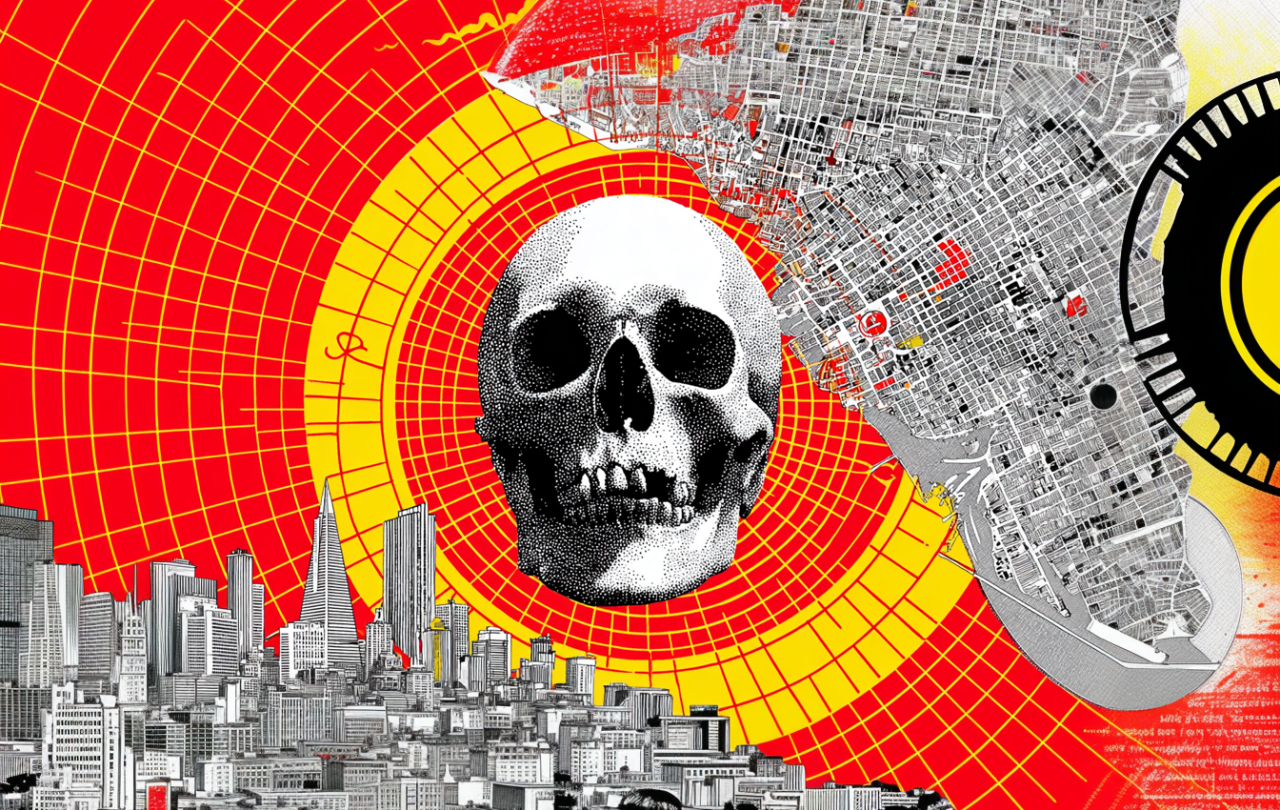The president of the United States is dead. The film Civil War culminates with soldiers of the Western Forces (a fictional secessionist group composed of California and Texas) posing for pictures with a presidential corpse just minutes after executing him. It’s a chilling climax, with optics reminiscent of American soldiers capturing deposed president of Iraq Saddam Hussein in 2003. The film ends with a warning. No democratic country, no matter the perceived strength of its institutions, is immune from tyranny, civil violence, and the bloody process of state failure. Collapse follows when states lose the capacity to provide solutions to the linchpin challenges negatively affecting their citizens.
A strength of Civil War is the way it articulates a universal political message without defiling itself with the toxic hyper-partisanship asphyxiating real-world American society.
It features a number of loyalist and secessionist geopolitical groups each motivated by a distinctive combination of social, economic, and political interests and goals. These groups include the Western Forces, Florida Alliance, New People’s Army, and Loyalist States.
The film’s storyline prioritises a violently unfolding near future civil war in a United States whose president bucked constitutional tradition by remaining in office for a third term. The president, whose character is modelled after Donald Trump, is the villain of the film, despite being supported by over half of the 50 American states. The Western Forces function as the film's hero group. Unlike the mercilessly murderous and viciously xenophobic soldiers affiliated with the Loyalist States, the soldiers of the Western Forces treat an eclectic team of journalists and war photographers (the film’s main protagonists) with kindness and respect, allowing them to accompany them during the final stages of their assault on the White House and entrance into the belly of the beast, the Oval Office.
The film includes shocking scenes that would make the most patriotic Americans shudder. Shortly after it begins, a suicide bomber associated with the Loyalist States, proudly carrying a large American flag, sprints into the centre of a group of vulnerable people, pleading with agents charged with guarding a water tanker, and detonates a bomb. Dozens of people including children are killed, many of whom were non-White Americans. This scene's power is that it bring home the threats Americans associate with foreign lands. Suddenly the menaces Americans instinctively link with states like Afghanistan, Burkina Faso, and Venezuela exist in cities like Charlottesville, New York, and Washington DC. America is no longer safe, and the threats have come from within instead of from abroad.
The message of Christ applies to theocracies and secular states alike. Every state, regardless of its attitudes toward religion, has an interest in its people living together peacefully.
As an American watching this film from a cozy cinema in Oxford, I thought about how the violence, polarisation, and civic rage depicted in the film already exists in many forms in the country I love from a distance. Shootings, many of them mass in nature, happen every day in an America whose citizens are comfortable with violence but afraid of each other. The United States suffers from an embarrassingly high association with mass shootings, far more than whichever county manages to claim an ignominious second place. Whilst it is unlikely tanks and attack helicopters will surround the White House anytime soon, the casual spirit of violence that has overtaken American society already fosters a level of violence far above the threshold any twenty first century democratic state should tolerate.
I watched this film as a proud American and as a committed Christian, a faith I share with many of my fellow American citizens. My Bible, and theirs, does say we are “citizens of heaven” destined to enjoy an eternal posterity in a New Creation marked by perfect peace and prosperity. However, until Christ returns, and God remakes the cosmos, Christians do have a vital role to play in their everyday civic communities. Whilst Civil War offers a grim view of America’s immediate political future, that message of Christ contains the content needed to cure the gravest challenges bedevilling the United States. I remain optimistic.
Not all Americans identify as Christians or even with organised religion; nevertheless, twentieth century history confirms that states that altogether ignore God will soon wither into an ecosystemic abyss of state-sponsored moral relativism that endorses the use of violence for an increasing, arbitrary range of unsuitable, injudicious, and illegitimate purposes. The message of Christ applies to theocracies and secular states alike. Every state, regardless of its attitudes toward religion, has an interest in its people living together peacefully. Humans need a moral system to provide them (as well as their societies at large) with at least a perceived sense of moral structure. Christ’s message articulates a concept of civic love that challenges the existing worship of civic and political violence. Christ argues that violence in moments of disagreement or dismay is never the appropriate option; the mark of genuine Christian devotion is revealed in the avoidance of violent action even when the use of violence would not categorically be condemned by observers.
Civil War explains how multiple, competing Americas exist. These Americas have different cultures, economic capacities, and sociopolitical ideologies. It teaches that America’s main problem is Americans only love other Americans like them. A number of enclaves exist across American society. Cut off from each other, the development of these enclaves has led to the emergence of micro-Americas so distinctive from each other that some of them no longer view formal geopolitical ties with other micro-Americas as in their best interest.
The same enclavisation portrayed in Civil War exists in the nonfictional, real-life America. However, unlike in the America depicted in the film, the real-life America still has time to solve its sociopolitical troubles and stop the American state from collapsing. I recommend Civil War to anyone interested in being entertained and warned by what a dystopian, worst-case-scenario of near-future American political activity might actually look like.





